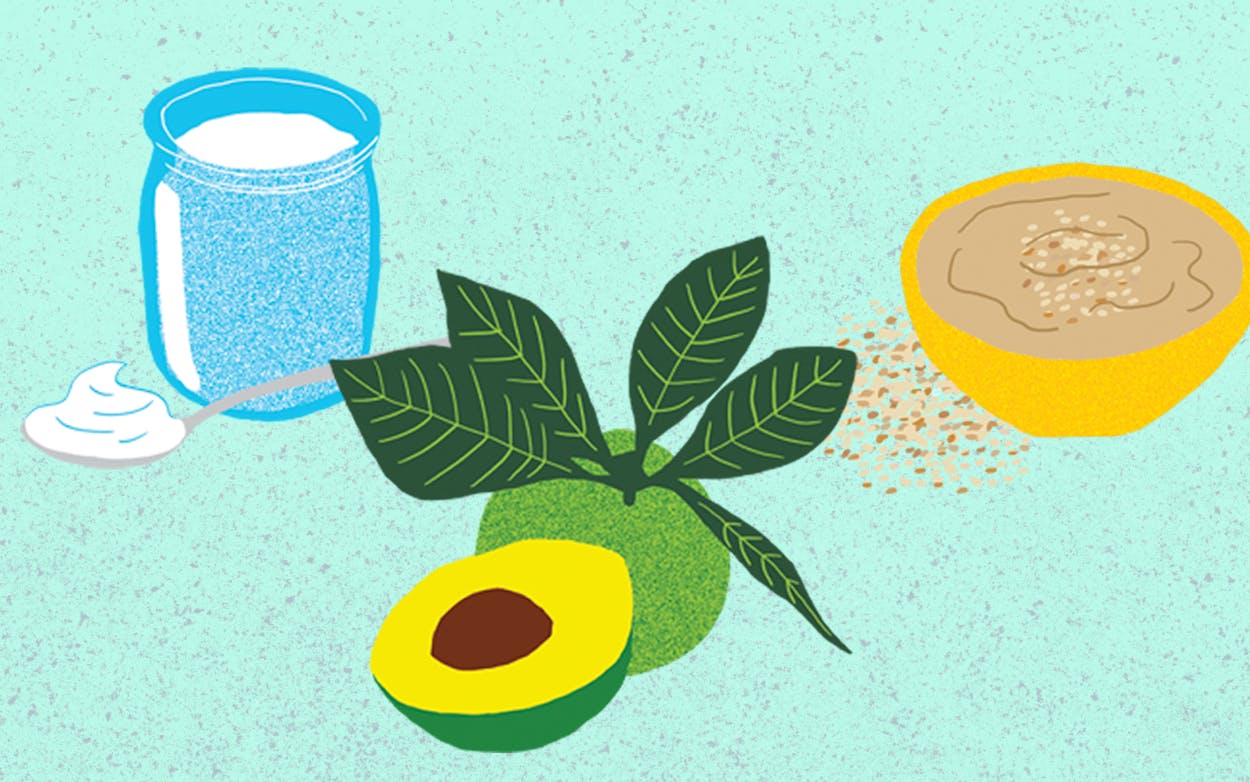For our November 2018 “Feast Around the World” feature, we asked five of the state’s top chefs to create festive meals to serve this season. What we got was a cornucopia of global flavors. Among those flavors were more unusual ingredients not found in traditional holiday spreads. Here’s a deeper dive on one interesting ingredient for each of the feasts.
FEAST:
Peruvian Party by Chef Maribel Rivero of Yuyo, Austin
Ingredient:
Lúcuma
Popular in South America, the fruit of the lúcuma tree is all but unknown in the United States. When ripe, it looks almost like an orange avocado; its slightly dry golden flesh, which surrounds a large round pit, tastes a bit like maple or perhaps a subtle butterscotch. Happily for us, it can be turned into a readily exportable powder that is easy to whip up into the tropical delicacy’s best use: ice cream.
FEAST:
Mediterranean Medly by Chef Stephen Rogers of Sachet, Dallas
Ingredient:
Tahini
Crush peanuts and you get peanut butter. Crush hulled sesame seeds and you get tahini, one of the most delicious and versatile staples of the Middle East, Asia, India, and North Africa. The sesame plant has been domesticated for millennia, being made into oil for cooking and lighting. Its oldest mention comes from a cuneiform tablet written some four thousand years ago describing the custom of serving the gods sesame “wine.” Wonder what that was like.
FEAST:
East Meets West by Denise Shavandy of Café Modern, Fort Worth
Ingredient:
Sumac
The dark-red powder on top of the hummus you had at a Middle Eastern restaurant the other day—the stuff you thought was paprika? That was sumac. Made from the crushed, dried pom-pom-like fruits of a species of sumac shrub called Rhus coriaria, this distinctively tart spice is ubiquitous throughout India, Iran, Israel, and beyond. Anytime you need lemon juice in a recipe for taste but not for the liquid, think sumac.
FEAST:
Hunting and Gathering by Chef Steve McHugh of Cured, San Antonio
Ingredient:
Chile Pequin
All this time, we thought Texas’s beloved chile pequin was unique. It turns out to be just another so-called bird pepper, a group of teeny wild chiles that our feathered friends have spread from the Southwestern United States to the Andes. At 30,000 to 60,000 Scoville units, chile pequins are five to eight times as hot as jalapeños, with a quick, sharp bite and a sweet, slightly smoky taste. The reason you won’t see vast bins of chile pequins in grocery stores is that they stubbornly resist being farmed. To this day, they are mainly harvested by hand, in the wild. Which is as it should be.
FEAST:
Tandoori and Beyond by Chef Kiran Verma of Kiran’s, Houston
Ingredient:
Yogurt Marinade
In the Western world, cooks use wine and acidic liquids like vinegar and citrus juices to marinate meats. In India and other Asian countries, yogurt is the substance of choice. You see it used most often on chicken and lamb chops, but it also works great on just about anything else, like pork kebabs and even cheap steaks. Top tip: use full-fat yogurt. It carries flavor and keeps a big holiday turkey nice and moist.
- More About:
- Recipes








